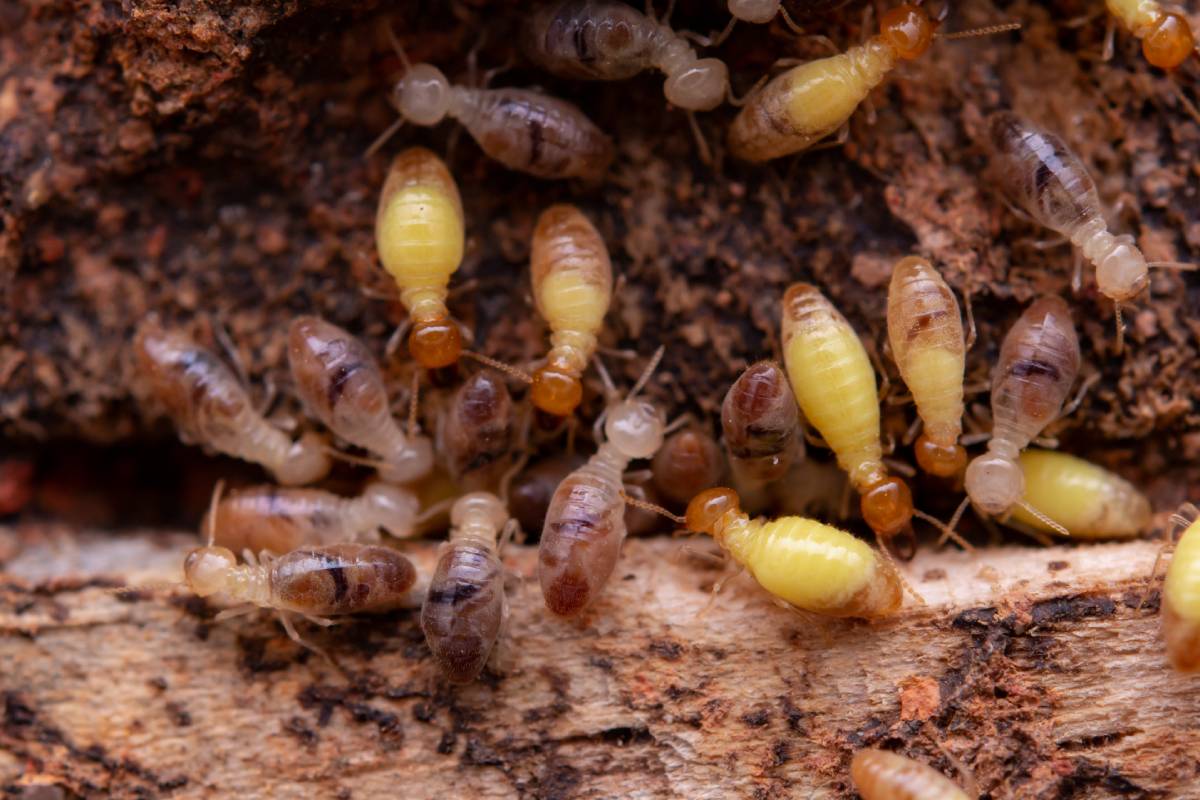Signs you have termites, rodents, bedbugs, cockroaches and silverfish in your house? Read this to learn more
You’ve sensed a disturbance in your home, and upon closer examination, you’ve stumbled upon clues indicating a potential pest issue.
While not a pleasant realization, addressing it promptly is crucial. Whether by your own efforts or with the assistance of professional pest control, action is imperative sooner rather than later. But what exactly are the signs that pests have invaded your home?

Signs you have termites in your house
Detecting termites in your house can be crucial for preventing serious damage. Here are some signs to watch out for:
- Mud Tubes: Termites often build mud tubes along walls, beams, or other structures. These tubes are narrow and made of soil and wood particles. They serve as protected passageways for termites to travel between their nest and food source.
- Wood Damage: Termites consume wood from the inside out, leaving a thin veneer of timber or just the paint. Tap on suspected wood; if it sounds hollow, it may indicate termite damage.
- Discarded Wings: After swarming, termites shed their wings, leaving them scattered near windowsills, doors, or other entry points. Finding discarded wings can indicate that a termite colony is nearby.
- Sagging Floors or Ceilings: When termites damage wooden structures like floors or ceilings, it can lead to sagging or warping. If you notice these signs, especially in conjunction with other indicators, it might be due to termite activity.
- Tight-Fitting Doors or Windows: Termites produce moisture as they tunnel through wood, which can cause wood to swell. If doors or windows suddenly become difficult to open or close, it could be a sign of termite damage.
- Visible Termite Workers or Swarmers: In some cases, you may actually see live termites. Worker termites are small, creamy white insects, while swarmers (reproductive termites) are larger and have wings. Finding them indoors is a strong indication of an infestation.
- Frass or Termite Droppings: Termites excrete wood-colored pellets called frass. Finding small piles of these pellets near wood structures could indicate a nearby termite infestation.
- Hollow-sounding Timber: Knock on wooden structures like beams or furniture. If they sound hollow, it may indicate that termites have eaten away the inside.
Signs you have rodents/rats in your house
Detecting rats or rodents in your house is crucial for maintaining a clean and safe environment. Here are some signs to watch out for:
- Droppings: Rat droppings are one of the most obvious signs of an infestation. They are small, dark pellets usually found along walls, in cupboards, or near food sources.
- Gnaw Marks: Rats have strong teeth and gnaw on various materials, including wood, plastic, and wiring. Look for chew marks on baseboards, furniture, food packaging, and electrical wires.
- Scratching Noises: Rats are active at night and can often be heard scratching or scurrying in walls, ceilings, or under floorboards. These noises may indicate their presence.
- Nests: Rats build nests using shredded materials like paper, fabric, or insulation. Check hidden and secluded areas such as attics, basements, or behind appliances for nests made of shredded material.
- Grease Marks: Rats have oily fur that leaves smudge marks along walls and surfaces as they travel along their regular pathways. These marks may appear as dark streaks near openings or along baseboards.
- Tracks: Rats frequently travel along the same routes, leaving behind visible tracks in dusty or less frequently cleaned areas. Look for footprints or tail marks in dusty corners or along baseboards.
- Food Damage: Rats will chew through food packaging to access food sources. Look for gnaw marks on food containers or packages, as well as scattered food items in cupboards or pantries.
- Pet Behavior: Pay attention to your pets’ behaviour. Cats and dogs may exhibit increased interest in certain areas of the house, such as under furniture or near walls, where rats are active.
- Unusual Pet Behavior: If your pet starts exhibiting unusual behaviour, such as excessive barking, scratching, or pawing at certain areas, it could indicate the presence of rodents.
- Visible Rats: In some cases, you may actually see rats or mice in your home, particularly at night when they are most active.
Signs you have fleas and bed bugs in your house
Detecting fleas and bed bugs in your house is important for both your comfort and health. Here are signs to watch out for:
Signs of Fleas:
- Pet Scratching: If you have pets, excessive scratching or biting, particularly around the neck, back, or tail area, may indicate fleas.
- Flea Dirt: Fleas leave behind tiny dark specks of faeces, often referred to as “flea dirt.” You may find these specks on your pet’s bedding, in carpet fibres, or on furniture upholstery.
- Flea Bites: Flea bites on humans are often small, red, and itchy. They tend to occur in clusters on the ankles, legs, or other areas of the body exposed while sleeping or sitting.
- Seeing Fleas: In severe infestations, you may actually see fleas hopping on your pet or around your home, particularly in areas where pets rest or sleep.
Signs of Bed Bugs:
- Bed Bug Bites: Bed bug bites are typically small, red, and itchy welts that often appear in a line or cluster on exposed skin, such as the arms, shoulders, neck, or face. However, not everyone reacts to bed bug bites, so you may not always see visible bites.
- Blood Stains: Bed bugs feed on blood and may leave behind small blood stains on bedding, mattresses, or nearby furniture. These stains may appear as small reddish-brown spots.
- Dark Spots: Bed bugs excrete digested blood, which can leave behind dark spots or smears on bedding, mattresses, or nearby surfaces.
- Visible Bed Bugs: While bed bugs are small and adept at hiding, you may still see them, particularly in areas where they congregate, such as mattress seams, box springs, or crevices in furniture.
- Musty Odor: In some cases, a musty or sweet odour may be present in areas with a heavy bed bug infestation. This odour is often described as similar to coriander or almonds.
- Eggshells and Shed Skin: Bed bugs moult as they grow, leaving behind translucent eggshells and shed skin. These may be found in areas where bed bugs hide, such as mattress seams, crevices, or behind headboards.
Signs you have cockroaches in your house
Detecting cockroaches in your house is important for maintaining a clean and healthy environment. Here are signs to watch out for:
- Cockroach Droppings: Cockroach droppings resemble tiny black or brown specks and may be found in areas where cockroaches frequent, such as kitchens, bathrooms, or behind appliances.
- Musty Odor: Cockroaches emit a distinct musty odour that becomes more noticeable with a larger infestation. If you detect an unusual, unpleasant smell in your home, it could be a sign of cockroach activity.
- Visible Cockroaches: In some cases, you may actually see cockroaches in your home, particularly at night when they are most active. Cockroaches typically hide in dark, warm, and moist areas such as kitchens, bathrooms, and basements.
- Egg Casings: Cockroach egg casings, known as oothecae, are often left behind by female cockroaches. These casings are small, oval-shaped, and may be found in hidden areas such as behind furniture, in cracks and crevices, or near food sources.
- Shed Skin: As cockroaches grow, they shed their exoskeletons, leaving behind empty shells or shed skin. These skins may be found in areas where cockroaches hide or travel.
- Damage to Paper and Fabric: Cockroaches may chew on paper products, fabric, and even book bindings. If you notice damage to paper goods or fabric items in your home, it could indicate cockroach activity.
- Grease Marks: Cockroaches produce oily secretions that can leave behind greasy smear marks along walls, baseboards, or other surfaces as they travel.
- Nocturnal Noises: Cockroaches are nocturnal insects and may produce rustling or clicking noises as they move around at night. These noises may be heard in areas where cockroaches are present, such as kitchens or bathrooms.
- Allergic Reactions: In some cases, prolonged exposure to cockroach allergens may trigger allergic reactions such as asthma or skin rashes in sensitive individuals.
Signs you have silverfish in your house
Detecting silverfish in your house is important for preventing damage to belongings and maintaining a pest-free environment. Here are signs to watch out for:
- Silverfish Sightings: Silverfish are nocturnal insects and typically hide during the day, making them elusive. However, you may occasionally spot them scurrying across floors, countertops, or walls, especially in damp, dark areas such as bathrooms, basements, or kitchens.
- Damage to Paper and Fabrics: Silverfish feed on a variety of materials, including paper, fabrics, and wallpaper paste. Look for small irregular holes or feeding marks on paper products, books, clothing, or upholstery.
- Shed Skin: Like many insects, silverfish shed their exoskeletons as they grow. Finding small, translucent, shell-like casings in areas where silverfish are present is a clear indicator of their activity.
- Yellow Stains: Silverfish excrete waste that can leave behind yellowish stains on surfaces where they crawl. Check for stains along baseboards, in corners, or on items stored in infested areas.
- Silverfish Scales: Silverfish have scales covering their bodies, giving them a silvery appearance. These scales may rub off onto surfaces they come into contact with, leaving behind a shimmering or silver residue.
- Moisture-Loving Areas: Silverfish thrive in damp, humid environments, so they are commonly found in areas with high moisture levels, such as bathrooms, kitchens, basements, and laundry rooms.
- Book Damage: Silverfish are known to feed on the glue and starch found in book bindings and paper products. Check for evidence of silverfish activity in bookshelves, on book covers, or in stored paper goods.
- Nesting Areas: Silverfish prefer dark, secluded spaces to hide and nest during the day. Look for them in cracks and crevices, behind baseboards, under sinks, or in cardboard boxes stored in dark areas.
- Nocturnal Activity: While silverfish are primarily active at night, you may hear rustling or scratching noises if they are present in large numbers, particularly in quiet areas of your home.
If you notice any of these signs, it’s important to take action promptly. Contacting a professional pest control service is often the best course of action to assess the situation and implement an effective termite treatment plan.
Conclusion
When you own a home, you’ve got to stay on top of things. If you see termites, rodents, fleas, bed bugs, or silverfish, it’s not just a potential annoyance—it’s a sign that you need to take action. By paying attention to these warnings and dealing with any signs of infestation right away, you can keep your property safe and your loved ones healthy. Whether it’s sealing up entry points, keeping things clean, or getting help from the pros, taking a proactive approach to pest control makes sure that your home stays a safe and welcoming place, free from unwanted intruders.









